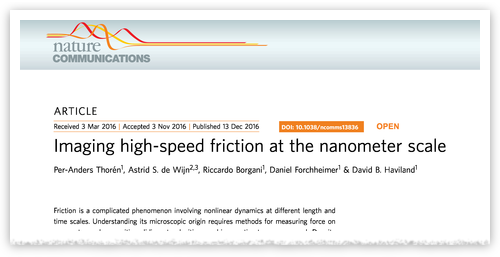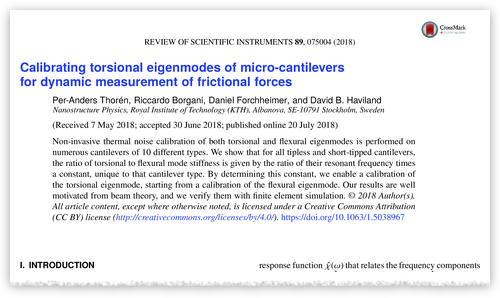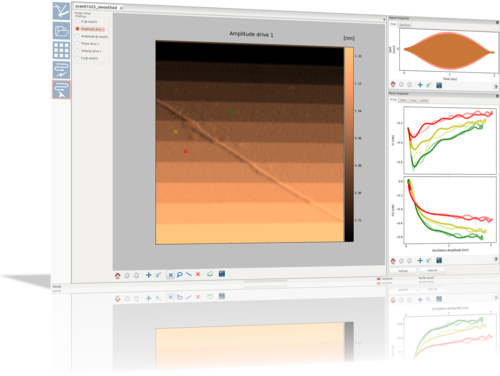Intermodulation Frictional Force Microscopy (ImFFM)
(ImFFM) uses torsional resonance to achieve very high tip velocity ~ 5 cm/sec while measuring frictional forces with very high spatial resolution ~ 10 nm. At each image pixel you can observe how conservative and dissipative lateral force depends on the amplitude of tip oscillation. As the sliding velocity increases there is a transition from stick-slip to free-sliding friction.
ImFFM in publications


